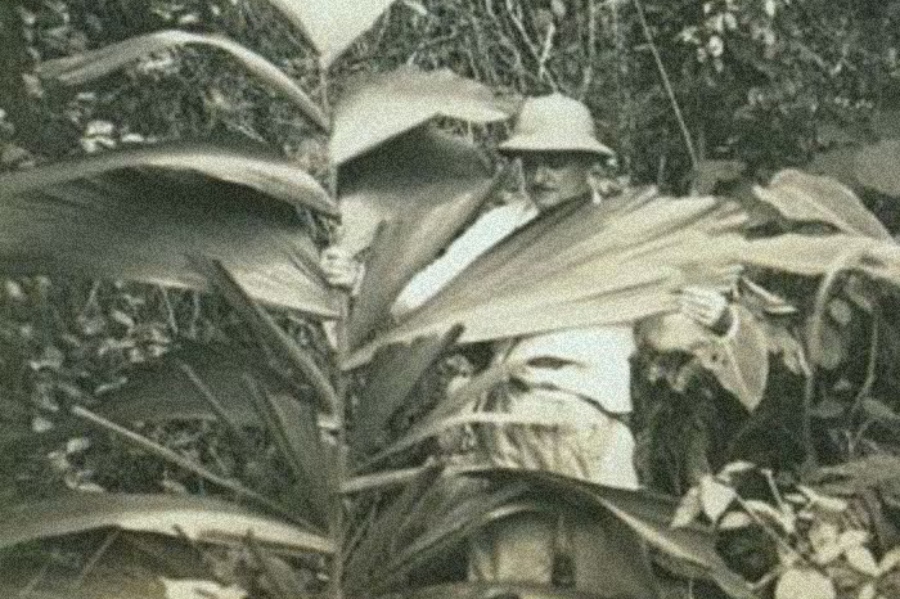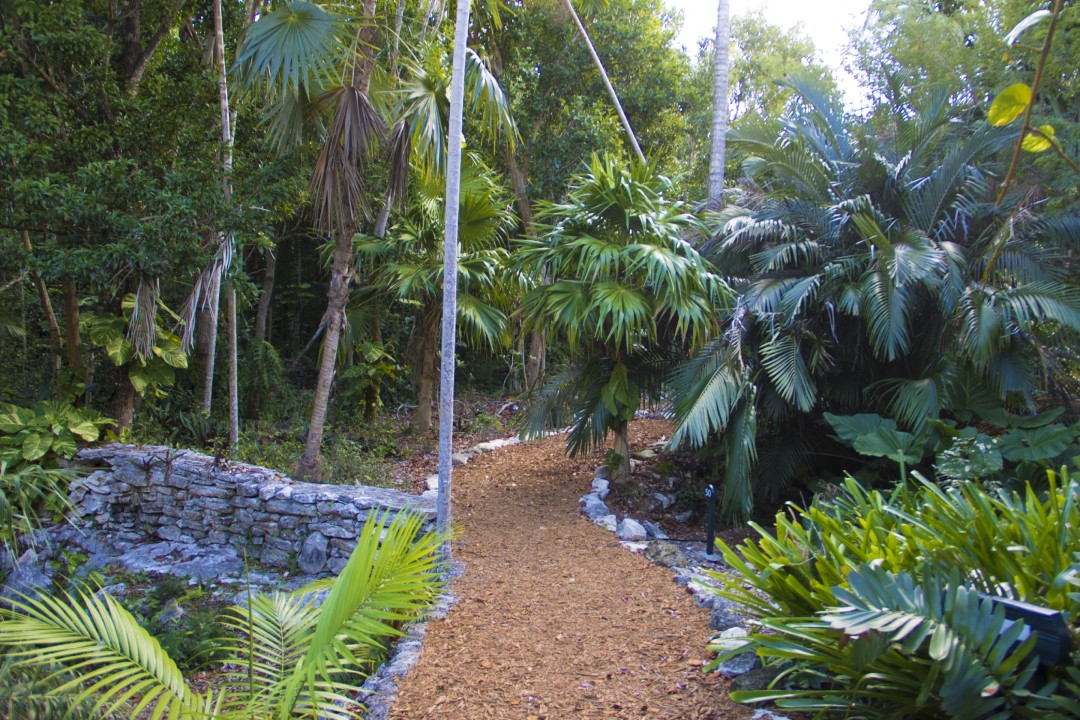The Retreat Garden
est. 1985
About
Hidden away from the busy city of Nassau, The Retreat Garden is an urban green oasis in the heart of the capital. This 11-acre national park is an internationally famous garden of palms and rare tropical plants. Formerly a private home, the estate was the first national park in New Providence. The Retreat garden is one of the best-known botanical gardens in the country and is a haven for migratory and resident birds.

Boardwalks and Trails
There are access boardwalks and trails in this park.

Bird Hotspot
This park has high bird activity.

Popular Tourist Attraction
This park is a great place to visit on your vacation.

Warden
This park has active wardens.

Restrooms
Restroom facilities are available in this park.

Visitor’s Center
This park has a visitor’s center.
BNT tour guides are available only by arrangement
An Urban Oasis.
The Retreat is an 11-acre botanic garden in the heart of Nassau that showcases rare and exotic palms, cycads, native hardwoods, and flowering trees. Some of these palms coming from places such as Madagascar, Indonesia, and Mexico.
Because of this unique mixture of native and exotic flowering plants, along with constructed water features the Retreat is a haven for migratory and resident birdlife. It’s known as the best spot on the island for migratory warblers and is popular among birdwatchers.
During the wintertime, these colorful, vibrant warblers can be seen throughout the forest, feeding on berries, nectar and visiting bird feeders. See a full list of birds found at the Retreat here.
The property, including a small wooden cottage, was acquired in 1925 by colonial civil servant Arthur Langlois and his Bahamian wife Margaret. At the time, the area was considered remote and rural. The Langlois’ had a lifelong passion for palm horticulture and study, and following years of research expeditions and seed collection, the Retreat garden would become one of the best-known private collections of palms in the world.

History
From Private Estate to World-class Palm Collection.
From 1925 until 1978, the entire 11-acre property was the private estate of Arthur Charles Langlois (1902-1977), a colonial civil servant, and his wife, Margaret Anne Langlois. As newlyweds in 1925, the Langlois had purchased the property, then “an undeveloped coppice of native trees and shrubbery”, from two Canadian brothers who had apparently used it as a residence. At that time, the rambling wooden house and a traditional Bahamian white cement building dating from the 1860s were the only buildings on what had once been an earlier colonial plantation or farm. Farther back on the property was a well, also apparently dating from the plantation period. In the course of restoring the garden after severe damage from five hurricanes between 1926 and 1929, the young couple identified 11 species of palms, and these were to become the start of a collection of palms and other species that eventually grew into one of the largest private collections of palms in the world.

Arthur Langlois with Stilt Palm (Iriartea gigantea)
While pursuing a distinguished career in the Public Works Department of the colonial government, Arthur Langlois went on a number of private expeditions to photograph and collect palms from various parts of the world. Employing two gardeners, he and his wife took advantage of the soil and moisture captured in the many natural limestone sinkholes on their property, a common geological feature on Bahamian islands. They used these sinkholes, called “Banana holes” by locals, as pot-like planting sites for the collected specimens, in some cases blasting to deepen them or building walls around them to improve moisture retention. The private gardens were laid out with looping trails and lawns amidst the plantings, and two of the larger sinkhole features were designed as dense jungle patches and named “Green Hell” and “Little Green Hell”. Although their main focus was the palm collection, the Langlois collected other species such as cycads and also enhanced the native coppice evergreen forest on the estate. As highly knowledgeable amateurs, the Langlois worked closely with professional botanists and palm experts worldwide and enjoyed a particularly close relationship with the Fairchild Tropical Botanic Garden in Florida, one of the world’s premier tropical botanical gardens. At the time of his death, Arthur Langlois had just published his important Supplement to the authoritative “Palms of the World” (author, 1950). His work won him recognition as an outstanding authority on tropical palms and his extensive records and papers are now housed in the Fairchild Garden library. These papers, together with the diaries of Margaret Langlois in the Bahamas National Archives, provide a wealth of documentation about the couple’s activities and the period of Bahamian history during which they transformed The Retreat from a plantation relic into a world-class botanical garden.

Main Coppice Path | The Retreat Garden.
To ensure the maintenance of the internationally significant palm collection on The Retreat following her husband’s death in 1977, Margaret Langlois (universally known by her nickname of ‘Wumpsie’) proposed that the Bahamas National Trust take over the property as a perpetual palm garden and bird sanctuary. With funds provided by Mr. Jack Hayward of Freeport, the Bahamas National Trust completed the purchase in 1978, but Margaret continued to reside in the house until eight months before her death on July 1985. In October 1985, with its buildings adapted to office use, The Retreat was officially opened as the national headquarters of the BNT by the Trust’s patron, Prince Philip. A garage-cottage built by the Langlois some distance behind the main house was converted to house the education and finance offices of the Trust. Two additional buildings were added behind the original house: an open pavilion immediately adjacent to the house provided a gathering place for large groups and a newer, single floor Park building offset behind the education offices accommodated scientific, planning and operational BNT personnel.
In 2016, the BNT moved its headquarters from The Retreat to East Bay St.

Yellow Ixora flower | Ixora coccinea
Today, The Retreat is a public attraction, a popular space for public events and private functions such as weddings. There is now a gift shop, reception office and a full complement of BNT Park and Garden staff. The Retreat offers a variety of recreational opportunities, ranging from experiencing a sense of natural solitude in the midst of a city, through birdwatching and natural history appreciation to holding social gatherings and activities in it’s scenic, green space.
The Retreat serves as an educational space where students and visitors can learn about palms, the coppice forest, birds, reptiles, insects, geology and the history of the Langlois.


